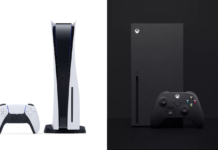This year at E3, Nintendo came prepared with three conferences and countless reveals for their next home console, the Wii U. The system might be catching up to the current generation in terms of graphics, but it’s also pushing the ways players can interact. Like Sony with the Vita and even Microsoft with its newly announced SmartGlass, Nintendo believes that two screens are preferable to one. With the introduction of the tablet-like GamePad and the integration of the “Miiverse,” the company is focusing on bringing people together more than ever before.
But do two or more people sitting in the same room feel closer if one is staring at a television screen feet away and the other is hunched over a personal device? Nintendo has confirmed that titles will support up to two GamePads at maximum, although most releases will start with one. That leaves players to fight over the new and exciting Wii U GamePad and decide who among them should play with the most innovative toy and who’s going to use the old Wii Remotes. Players can undoubtedly take turns, but singling out one player in this way is different than picking a red controller over a blue controller — or even determining who should handle the master controls by acting as Player One.

When the GamePad comes into play, the whole experience changes. If one person is seeing something completely different than what’s on the main television screen, what makes that different than playing against someone online? Doesn’t that essentially remove a player from the core experience? Two people playing the same game on different televisions aren’t necessarily interacting how they would be if they were sharing a screen, even if they’re sitting side by side. And one person playing, say, Pokemon on a handheld would be hard-pressed not to peer over at his friend’s screen to check on his progress or challenge him to a battle where whatever happens can be seen identically on both screens.
The promised Miiverse might connect players in a better way, however. Trading tips and asking for help with a game ensures common experiences — what worked for one player might work for another. That type of dynamic could inspire a tighter sense of community, since users would be communicating with friends they know on a smaller platform — similar to how people on a private forum feel more united than people commenting on a much more open, impersonal website, where not everyone shares a single passion or perspective.
The Miiverse will hopefully encourage players to reach out to one another and collaborate in a positive manner, and they can do that through text chat or webcam. They can even transmit screenshots and gameplay.

As Satoru Iwata said, “Not only does Wii U offer players a way to connect across great distance, but they can also enjoy a sense of connection even when not playing at the same time. Players will be able to compete with others online, but with the Miiverse even the single-player game, even when not competing or cooperating, even when games are not designed for online interaction, Miiverse can connect your living room to those with others regardless of space or time."
Nintendo seeks to build a social network, and it’s possible that the Miiverse could actually foster more in-person conversations about games, as well, if people have already kindled a discussion when apart.
It’s worth wondering whether Nintendo’s strategies and approach to the Wii U will be successful in bringing people together when they’re in the same room, looking at separate screens, or if the Miiverse will prove more of a connective force. There’s no doubt that the GamePad will help deepen multiplayer and even single-player as we know it, but Nintendo could also be creating a divide between players by offering them vastly different ways to play and see the same game. After all, when we view the world differently, we’re more likely to drift apart.
Follow @wita on Twitter for tales of superheroes, plumbers in overalls, and literary adventures.










